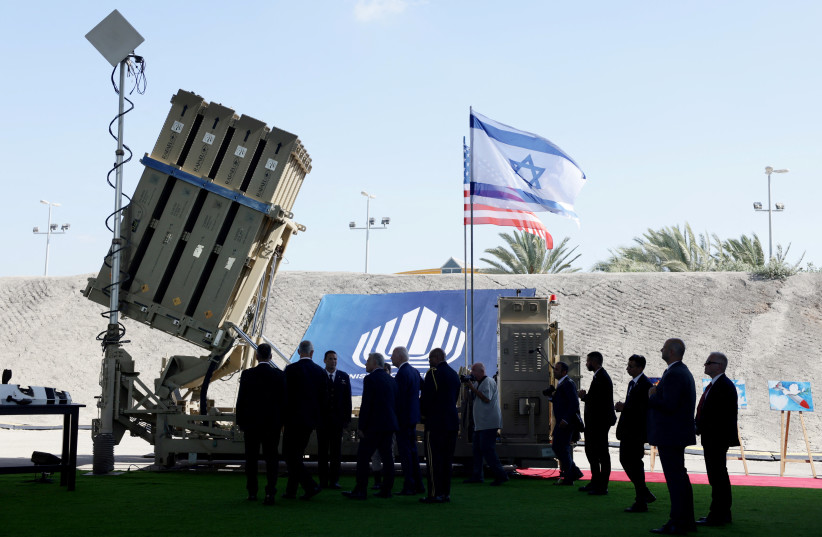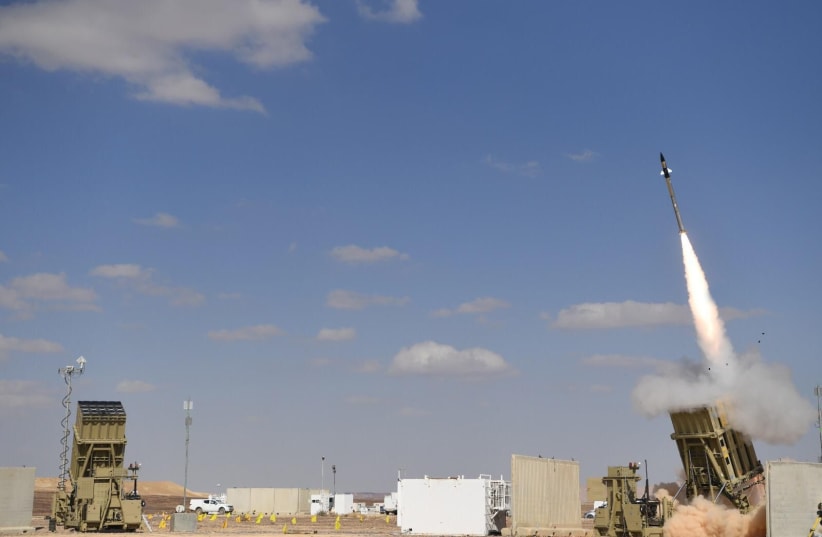Following a series of successful live-fire tests, the Marine Corps is ready to procure the Medium-Range Intercept Capability (MRIC) prototype with components from Israel’s Iron Dome missile defense system.
“We just proved it and tested it,” said Gen. Eric Smith, assistant commandant of the Marine Corps (ACMC) during an event hosted by the Center for Strategic and International Studies and the US Naval Institute on Monday.
“And now we’re going to start moving out to procure that system. It’s been in the works for a while. And I would note that we held onto funding for that for almost two years until you could prove it, and now [that] it’s proven, we will start procuring.”
It’s been in the works for a while. And I would note that we held onto funding for that for almost two years until you could prove it, and now [that] it’s proven, we will start procuring”
Gen. Eric Smith

Successful tests
During the live-fire tests at the White Sands Missile Range in New Mexico on June 30, the MRIC prototype tracked each target and passed the target through the CAC2S to the Iron Dome components. MRIC successfully hit several drones that simulated cruise missiles simultaneously launched from different directions and on different trajectories.
“We successfully tested three out of three against moving drones,” said Smith. “We were supposed to have four, but the drone that we were shooting broke; we didn’t have anything to kill with that shot.”
The successful tests, which followed a previous live-fire test in December, “moved us beyond the Stinger, which is what I have now, a fairly short-range capability. We needed a longer-range capability to be able to cover these highly mobile units,” he said of the Marine Littoral Regiments. We asked for a wicked solution to a wicked problem. High mobility, lightweight, and much longer range. And MRIC provided that to us.”
The MRIC uses the Corps’ Ground/Air Task-Oriented Radar (G/ATOR) and Common Aviation Command and Control System (CAC2S). It also incorporates the Iron Dome’s Tamir interceptor and launcher “to create an air defense system tailored to existing USMC assets and expeditionary requirements,” read a statement by the Defense Ministry after the test in June.
Iron Dome
The Iron Dome, in use since 2011 and designed to shoot down short-range rockets, is an integral component of Israel’s multi-layered defense array. The Tamir interceptor is capable of intercepting cruise missiles, unmanned aerial systems, rockets, artillery and mortars.
The prime contractor for the development and production of the Iron Dome is Rafael Advanced Defense Systems, who adapted the system to USMC requirements and assisted testing support. The MMR radar is developed by ELTA, a subsidiary of Israel Aerospace Industries (IAI), and the command and control system (BMC), is developed by mPrest.
According to the Marine Corps, there is an additional live fire test before a final decision is made later this year.
The MRIC, Smith said, “is the thing that was most needed to complete the toolkit that our commanders in the Marines Littoral Regiment will need to be most effective on the future battlefield, and I’m excited about it.”
